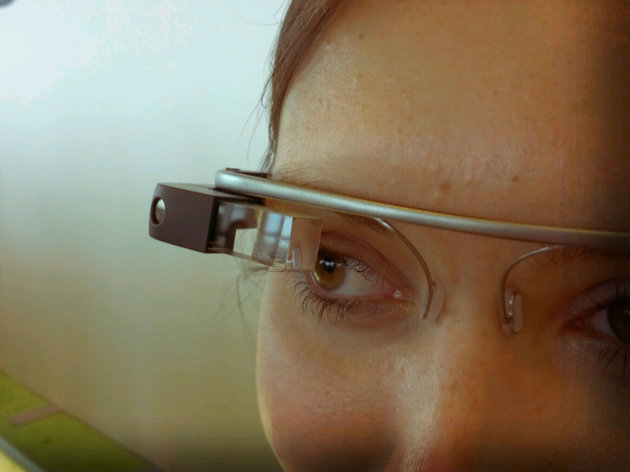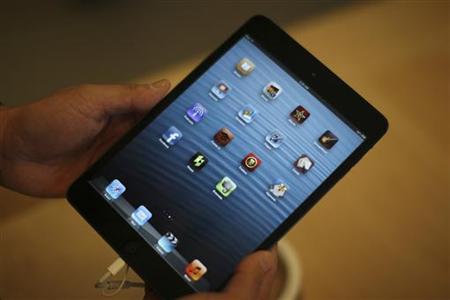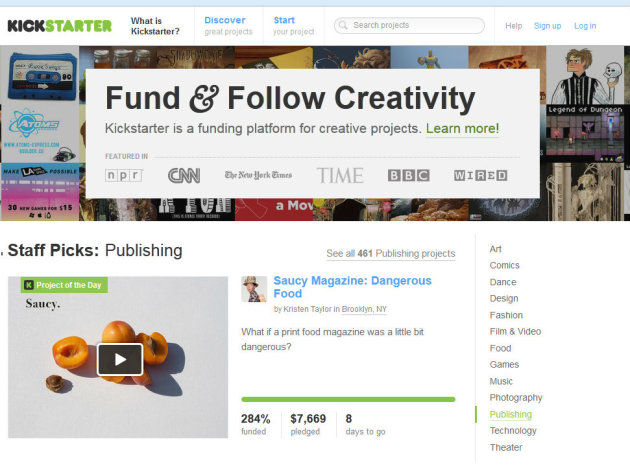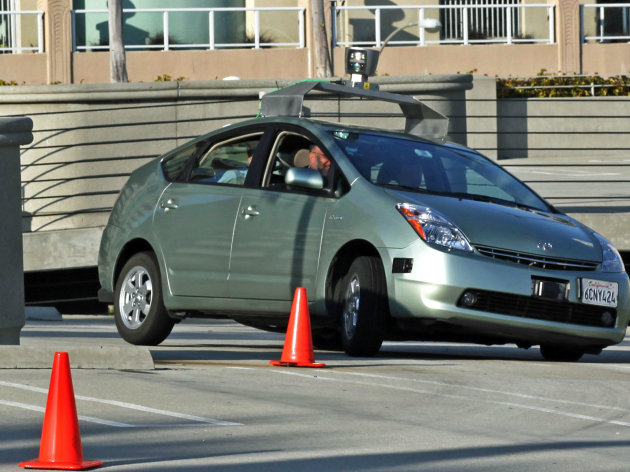Monday, December 31, 2012
Sunday, December 30, 2012
India 227/6
A Team 29/5 made 227/6, what a performance by the Indian Skipper.
DHONI 113*
Raina 43
Ashwin 31*
Saturday, December 29, 2012
India beat Pakistan by 11 runs
India beat Pakistan by 11 runs
India clinch thriller against Pakistan. Hosts post massive score in second T20, Pakistan get close but fail to close the deal
Thursday, December 27, 2012
Android in 2013: What to expect
Android in 2013: What to expect
The Android ecosystem has become a dominant force in 2012. Here's how I see it growing in the coming year.

Android is rapidly evolving. Where will it go next?
Brace yourselves: 2013 is upon us, and that means a whole new generation of Android devices, rumors, and expectations.
Android will have a strong showing at CES, and the next few months will be littered with new smartphones and tablets. Let's take a look at some of the trends we can expect in the Android space over the coming year.
This article will touch on many trends in the Android ecosystem, including hardware advancements, vendor decisions, and key events of the year. Given the sheer number of players in the space, there will be much to look forward to in the ever-evolving Android landscape. Indeed, much could be said about any one of these aspects of Android, but I'll address them here in broader terms.
Screen size will sharpen and grow
Not long ago, most smartphone screens didn't exceed 4 inches. Up until the HTC Evo 4G, most Android phones were had 3.2-inch and 3.5-inch displays. Now, thanks to popular handsets such as the Galaxy S (4.8 inches) and Galaxy Note 2 (5.5 inches), consumers are becoming used to much larger screens.

Expect more 5-inch 1080p HD Android smartphones like the Droid DNA.
Motorola, for its part, has been able to squeeze a 4.3-inch display into the body of a phone that is roughly same as a 3.5-inch phone -- the Droid Razr M. I suspect this will be something that Motorola and others look to replicate in the coming generation. Look for more press releases that tout features such as edge-to-edge screens or no bezel.
Beyond size, resolution will sharpen. HTC had a leg up with the Droid DNA with a 1080p (versus 720p) resolution, but now nearly every handset maker you can think of is reportedly working on their own 5-inch 1080p HD display for their premium products. Whether you place a lot of importance on pixel density or not, expect screen resolution to be a big buzzword in 2013.We'll continue to see all sorts of screen sizes in 2013, but the standard high-end experience will fall in the vicinity of 4.5 inches. Those of us who are moving into our second and third Android device will expect something at least as big as our current model.
Quad-core will multiply
If you listen to companies such as Qualcomm and Nvidia, then you're well aware of the fact that quad-core is the new spec hotness, and Android is the vanguard of competition among handset makers all vying for your little green Android dollars.
Gone are the days of big dual-core announcements. If you don't come to the table with at least four cores of mobile prowess, then you're not really expecting to compete on the high-end. We should anticipate that the big devices of the coming year will have quad-core 1.5GHz processors or higher, with some even hitting 2.0GHz by the year's end.

Handsets like the Optimus G may look antiquated in one year's time.
Of course, the fight for faster processors might only be relevant on paper; real world practicality is a different animal. It's one thing to tout the impressive clock speeds or point to a benchmark, but showing the benefits to end users is the most important win.
Play a lot of 3D games? You definitely care about who makes your phone's CPU. Just want to see what this whole Android thing is all about? Jump in wherever you want, you'll be just fine.
One area where we may see more improvements is in the phone's memory and storage. If the previous year saw 2GB RAM emerge for the top-of-the-line memory experience, next year may see us inching toward 3GB RAM.
Storage capacities for Android phones (and all phones) will creep up in 2013 as well, yielding 32GB as the standard for mid-range and 64GB becoming common among high-end devices. This will be especially true for those manufacturers opting for internal batteries and removal of external storage, and I expect to see the first handset with 128GB internal storage appear before 2013 is out.
Entry-level phones will benefit
You have to appreciate the trickle-down effect of technology as today's top devices quickly become tomorrow's mid-range experience. With that in mind, the $50-$100 Android smartphone of 2013 will be quite an impressive piece of hardware.
Dual-core processors should become the norm for your "basic" Android phone as single-core stuff gets pushed aside. The same may be said of the no-contract handsets, as we'll continually get more for our money.
As every carrier scrambles to build out its next-gen data network, 4G LTE will be commonplace in Android smartphones. Sure, we'll get the occasional 3G product every once in a while, but that will diminish with time. This is not to say that 2013 will be the end of 3G Android, but the days of touting 4G LTE as a special feature will pass.
Popularized technologies
There is always a chance that we'll see a 3D experience in an Android phone or two, but I have the feeling this is one technology that won't take off. I've yet to run into someone who wants or needs 3D graphics in their mobile device. Sure, it's a cool feature to show off once in a while, but we're just not ready to adopt this baby.
NFC will continue to gain a foothold in Android products, maybe to the point of standardization. More companies will push it out in the mobile payment space and general consumers will become aware of its capabilities.
I get the feeling that we'll see a new surge in NFC-enabled accessories and technologies in the coming wave of tech conferences. The idea of tap-to-play speakers or media players doesn't seem like much of a stretch for this year's biggest mobile conferences, CES in January and Mobile World Congress in late February.

Samsung's TecTiles are a great way to use NFC that does not revolve around mobile payment
Perhaps the biggest issue facing smartphones with large displays and super-fast processors is battery life. Nobody wants to put their phone away to preserve juice; we bought that big screen for a reason.
Looking ahead to the new year, I expect to see more handsets come with internal and/or higher capacity batteries. The Droid Razr Maxx HD is still the benchmark for long-lasting batteries, but we should see the gap narrow. To that end, we may see less emphasis on "world's thinnest" or "lightest" claims.
As many readers know, Android has given way to a number of unique form factors over time. One design that pops up every once in a while is the secondary screen. We may not be at the end of this occasional one-off, however we might see fewer announcements of far-out designs over time.
The main reason? Developers don't want to write their apps for yet another screen layout. It also doesn't help when you have two screens with bezels and a broken or split image. With that in mind, someone will find a way to make a compelling experience. Unfortunately, I do not see this happening in 2013.
One device around the world
I cannot tell you how pleased I was when I learned that Samsung was going to adopt one singular form factor for the Galaxy S3 and Galaxy Note 2 across countries and carriers. I'm sure that a number of accessory makers were quite happy with the decision as well. Samsung will employ the same strategy for the Galaxy S4 and will likely have records sales again in the new year.
Android comes to new territories
As far as other companies going this route, HTC today seems to be the closest. I wouldn't be surprised if its next flagship model were to hit multiple carriers with a single design. As nice as it was to have fewer models to choose from in the One series, it was still confusing to keep up with the various suffixes -- One X,One X+, Evo 4G LTE. "Does my carrier offer that one? What's the difference between this and that?" Along those lines, LG also seems to be slowly headed in this direction with the Optimus line.
The Samsung Galaxy Camera wasn't the first digital camera to utilize Android, but the first to tie into carriers.
Nikon, Polaroid, and other camera-makers will dabble a bit with Android backbones and we'll see more smarter shooters in 2013. Pricing will need to come down for mass adoption; however, we will see carriers selling connected cameras in retail stores and online.
We will also see more kid-centric tablets and devices with Android under the hood in the next year. We might as well get used to the fact that Toys R Us and Walmart are going to offer $99 Android tablets.
Once the price point of a generic, knock-off tablet, the $100-$200 price range now offers a decent experience for most. Come this time next year, it will not be strange to see a house with even more Android tablets for a range of age groups. Expect more products like the Nabi Jr(toddlers) and Nabi XD (tweens.)
Shortly after Android became a recognized term in the mobile space, we saw the platform arriving in various electronic devices including microwaves and washing machines.
I don't think we'll find too much of that in 2013, but it would not surprise me to see a refrigerator or appliance with a custom touch interface that runs Android. Not a full-blown experience, mind you, but something that gives hardware-makers more flexibility.

2013 should bring more kid-friendly Android devices, such as the Nabi 2
Of all the places Android has been absent, I'm surprised we don't have a new generation of Chumby or Teddy Ruxpin toys. I might be reaching here, but I can imagine a scenario where your companion toy educates children or plays interactive games with them. A front-facing camera that recognizes the child, a belly with a touch screen, or a Pillow Pet with interactive stories seem more real than fantasy today.
There is a chance that we'll see more Android in the automobile in 2013, but it'll have competition from RIM's QNX OS. This won't be a replicated tablet-like experience with full-on Google Play support but something a little smarter than what we have today. It is easy to picture a 7-inch display that lets users hop from stereo to diagnostics to Google Maps.
Another area that would work well is embedding a tablet in the back of the driver and passenger seat. With more cars offering Wi-Fi connectivity over time, a connected device just makes sense. Don't be surprised if someone introduces a backseat experience that includes access to social networks as well as casual games such as checkers for road trips. For added fun, pair your Bluetooth game controller and dive into a 3D shooter.
The Nexus project will continue to evolve
The Nexus initiative will continue to change with the times and we'll see more hardware with Google's official stamp of approval. With three devices to choose from today (Nexus 4, Nexus 7,Nexus 10), it isn't much of a stretch to consider that Google will want to refresh the lineup at least once a year.

LG's Google-branded Nexus 4 introduced Android 4.2 Jelly Bean.
Considering that there are three different companies supplying the hardware for the Nexus line today, I would look for more of the same down the road. Google will likely share the love with new and returning companies in 2013 and consumers will come to know what Nexus means.
The coming year may finally bring us a Google and Motorola Nexus product. As something that the industry has expected over the last year, Google has not ruled out such an animal. In fact, all the conversations I've read these past months seem to dance around the topic. With no outright denial of a Motorola Nexus device, I'm reminded of the old adage "where there's smoke there's fire." With that in mind, a smartphone seems more plausible than a tablet at this stage.
Whether we see one-off products like the Nexus Q in 2013 remains to be seen. I get the sense that Google like to test the waters and introduce real, working proof-of-concept devices just to gauge developer and consumer reactions. I won't rule out anything like this for next year however I might expect Google to downplay its significance or potential. Perhaps a "hey check this out, we think you'll like it" introduction is in order.
Google I/O and major releases
If the last few years are any indicator, there will be at least five key moments for Android in 2013, starting with trade shows: CES in early January, the international Mobile World Congress in late February, and CTIA in late May. Samsung is also expected to launch its Galaxy S4 flagship phone at a standalone press event, if we follow 2012's model.

Android Jelly Bean is just the beginning.
Yet we'll see the real ecosystem-changing stuff at Google's annual developer conference, Google I/O, in May.
So far, indicators point to an Android 5.0 Key Lime Pie. It's tough to forecast what will be in this coming release, but I definitely see more polish and attention to detail on the horizon, plus more camera and mapping tricks.
Android's background OS will continue to gain speed, and the company will introduce new features that again pull away from iOS to set the industry pace. We don't know much about Android 5.0 quite yet, but we'll assuredly discover bits and pieces of upcoming features in the months just before Google I/O -- especially if Google releases a new Nexus device or two to go along with the latest software build.
2013 will certainly be an exciting year for Android, with the mobile OS surely maintaining its mobile lead.
Will the Samsung Galaxy S4 be 'unbreakable'?
Will the Samsung Galaxy S4 be 'unbreakable'?
A new rumor says Samsung's fancy bendable displays could come to market in its next flagship phone.

Will the next Samsung Galaxy flagship phone bring a comic book dream to life and be truly "unbreakable."
(Credit: CNET)
If the rumors are true, Samsung is looking to go big with its next flagship Android phone, presumably to be the Galaxy S4.
Not only is it rumored that the next batch of galactic goodies will pack a quad-core processor and 13-megapixel camera, as CNET's Scott Webster recently reported, but there's also word it could come with an "unbreakable" screen, according to one analyst quoted by Reuters.
Sanford Bernstein analyst Mark Newman predicts that either the Galaxy S4 or Galaxy S5 will have bendable or even foldable displays by 2014. Just imagine, returning to the legacy of the flip phone with new folding or even "squishy" phones. I might even stand in line for a "koosh" phone.For years now, Samsung has been teasing us with its fancy, flexible, unbreakable displays at CES and other venues, but little of the technology has actually been brought to market.
If the Samsung Galaxy S4 arrives in the middle of next year with an unbreakable screen as some rumors claim, I predict it will be one of the best summers I've seen yet for blockbuster gadget torture tests.
Get the wrecking ball ready, I can't wait.
Thursday, December 20, 2012
Google Doodle celebrates 200th anniv of Grimm Brothers’ Tales
Google Doodle celebrates 200th anniv of Grimm Brothers’ Tales
The Google Doodle today is definitely worth checking out especially if you are one of those who loved your fairy tales. It celebrates the 200th anniversary of the first publication of Grimm Brothers’ Die Kinder und Hausmärchen (Children’s and Household Tales). The Doodle shows the story of one of the most loved of those stories, The Little Red Riding Hood.
For the uninitiated, The Little Red Riding Hood, is the story of a girl, who were a red coloured hood and goes to visit her grandmother who is sick. She meets a wolf on the way and unsuspecting that she tells him about her poor grandmother. The wolf runs ahead, eats her grandmother, and waits for her. When Red Riding Hood comes the wolf devours her as well. Luckily a woodcutter comes and kills the wolf and two are saved.
The story is often seen as an analogy warning young girls of the perils of talking to strangers and the perils it carries. By the way, there’s also a modern version of the classic tale as well where it is Red Riding Hood who shoots the wolf with a gun and turns him into a fur coat.
The Google Doodle today has several panels. You click on the forward button on the right hand side of the panel and you move on to the next page of the story. Each page shows a different chapter of the story.
According to this piece in the Guardian Germany is celebrating the 200th publication of Grimm’s tales as well. Academics from around the globe, meeting this week in the central German city of Kassel, close to the brothers’ birthplace, are kicking off the 2013 celebrations with a Grimm brothers’ congress. Participants, ranging from lexicographers to psychoanalysts, will focus on everything from the book’s enduring legacy to the brothers’ impact on German grammar and how they shaped the nation’s erotic imagination.
Well, the Google Doodle was a fun way to start the celebrations.
Wednesday, December 19, 2012
TOP TECH STORIES OF THE YEAR
TOP TECH STORIES OF THE YEAR
Google glass
Trudging through the trail of 2012 tech stories and yanking out the best was an onerous task. After much scrutiny, we have unearthed the absolute best.
 Image via Wikimedia Commons
Image via Wikimedia CommonsGoogle glass comes out of the innovation lab of Google X, a pet project of Google founder Sergey Brin, which is focused on next generation innovations. It comes equipped with a camera, Bluetooth, Wi-Fi and a 0.5 inch display.
Did we mention that it looks sexy and sophisticated as well? Flip the commands on and you have access to maps, take photo and share them, do a video-chat and also get online. Awesome!
Google glass was debuted at the 1/O developer conference earlier this year. It is part of the search giant’s strategy to go beyond search to compete with the tearing user growth of new entrants like Facebook.
Google glass can be pre-ordered at $1500 a pop. Google’s latest gizmo may have a lot of folks very excited but its real success will be revealed in a few years.
BEST CRICKETING MOMENTS
BEST CRICKETING MOMENTS
Tendulkar’s 100th century
Like any other year, this one too had its highs and lows, moments that captured the imagination for contrasting reasons. Here's a lowdown on what happened in the world of cricket in 2012.
Even for a country obsessed with records, rarely has such anticipation preceded a landmark. The possibility of his hundredth international ton sat on Tendulkar’s shoulders like Betaal on Vikram, shackling the great man under its burden for an inordinately long period. Several ‘suitable’ opportunities were missed, chances strewn and the knock finally arrived at Mirpur againstBangladesh, on March 16, 2012 in the Asia Cup.
Tendulkar’s reaction was strange: “It's been a tough phase for me ... I was not thinking about the milestone, the media started all this, wherever I went, the restaurant, room service, everyone was talking about the 100th hundred. Nobody talked about my 99 hundreds. It became mentally tough for me because nobody talked about my 99 hundreds." Oh yes, and India lost that match to Bangladesh.
TOP TECH STORIES OF THE YEAR
TOP TECH STORIES OF THE YEAR
Samsung overtakes Nokia to become top phone brand of 2012
Samsung has overtaken Nokia as the top mobile phone brand for 2012 and has opened up a decisive lead over Apple in the smartphone market.
This will mark the first time in 14 years that Finland-based Nokia will not sit atop the global mobile phone business on an annual basis, according to IHS iSuppli.
Samsung is expected to account for 29 percent of worldwide cellphone shipments, up from 24 percent in 2011, according to the IHS, which said Nokia's share dropped to 24 percent from 30 percent. This will mark the first time the South Korean electronics giant will occupy the top on a yearly basis, IHS said.
Samsung has also extended its lead over Apple as the top maker of smartphones worldwide, the survey said. Samsung will have 28 percent of the market, up from 20 percent in 2011, while Apple's share will rise in 2012 to to 20 percent from 19 percent.
"The competitive reality of the cellphone market in 2012 was 'live by the smartphone; die by the smartphone,'" said Wayne Lam, senior analyst at IHS.
"Smartphones represent the fastest-growing segment of the cellphone market and will account for nearly half of all wireless handset shipments for all of 2012. Samsung's successes and Nokia's struggles in the cellphone market this year were determined entirely by the two companies' divergent fortunes in the smartphone sector."
IHS said global smartphone shipments are set to rise by 35.5 percent this year, while overall cellphone shipments will increase by just one percent. This will propel 2012 smartphone penetration to 47 percent, up from 35 percent in 2011.
IHS noted that Samsung produces dozens of smartphone models every year that address all segments of the market, from the high-end to the low-end. Nokia is transitioning its smartphone line to the Windows operating system, resulting in declining shipments for the company.
Sales of Nokia's older Symbian-based phones have plunged, while its new Microsoft Windows-based handsets have been modest so far.
IHS said Samsung, which was in a tight battle in 2011 with Apple, has moved ahead decisively ahead of the California giant with a wide range of Android smartphone offerings, while Apple limited its smartphones to the premium iPhone line.
The report said BlackBerry maker Research in Motion will see its market share fall to five percent in 2012, from 11 percent in 2011.
IHS said it expects smartphones gains to accelerate in 2013, and to account for 56 percent of the mobile phone market.
TOP TECH STORIES OF THE YEAR
TOP TECH STORIES OF THE YEAR
Facebook IPO
Trudging through the trail of 2012 tech stories and yanking out the best was an onerous task. After much scrutiny, we have unearthed the absolute best.
 Image via Reuters
Image via ReutersPerhaps the biggest tech story of 2012 was the highly anticipated event of Facebook going public at a whopping, previously unheard valuation of $100 billion.
The IPO driven by gung-ho analysts and rabid media ensured that the stock was already oversubscribed forcing Facebook to issue more shares. Not since the Google IPO debut had NASDAQ witnessed such madness.
But the IPO was a damp squib from day one, with the stock tanking on debut and in the process leaving thousands of investors with a lighter wallet. For the first time, the company that could do no wrong looked like a loser. Analysts had concerns about Facebook’s flat audience growth in the US, its ability to keep revenues growing at a fast clip and questions around how it will monetize mobile.
After weeks of the stock dipping and going below the $20 mark, it has picked up somewhat, buoyed by better mobile monetization and Zuckerberg assurance that Facebook will explore new revenue streams. The company’s latest milestone was to breach the 1 billion active user mark
TOP TECH STORIES OF THE YEAR
TOP TECH STORIES OF THE YEAR
iPhone 5 and the iPad mini
Trudging through the trail of 2012 tech stories and yanking out the best was an onerous task. After much scrutiny, we have unearthed the absolute best.

The iPhone’s release in September this year was one of the most highly anticipated events in the 2012 tech calendar. Apple did not disappoint. The new iPhone is thinner, lighter and has a bigger screen size. Apple fan-boys, wowed by the beautiful new toy, flooded the company with pre-orders snapping up more than 4 million iPhones in the first three days after launch.
The iPhone is Apple’s brightest jewel in an already glittering product portfolio that includes bestsellers like the MacBook range and the iPad. Consider this: Revenue from the iPhone is more than the combined revenues of all Microsoft products! It also contributes to more than 50 per cent of all Apple revenues and two-thirds of the profits.
You’d think that Apple would take it easy after the iPhone release. But no, for months on end there were rumours of a new iPad, a smaller version, and maybe cheaper, too. Rumours proved to be true. Tim Cook released it in October during a special Apple event. Dubbed the iPad mini, it was Apple’s response to the changing tastes of consumers, and competition from the likes of Google’s Nexus 7 and Amazon’s Kindle Fire. While demand for the iPad mini has not been as rabid as the iPhone or iPad, expect that to pick up as and when Apple irons out chinks to current product and drops the current high price
TOP TECH STORIES OF THE YEAR
TOP TECH STORIES OF THE YEAR
Facebook buys Instagram
Trudging through the trail of 2012 tech stories and yanking out the best was an onerous task. After much scrutiny, we have unearthed the absolute best.
 Image
ImageEverybody loves mobile photo sharing service Instagram, but the question on everybody’s mind was- is it worth $1 billion? Facebook founder Zuckerberg was convinced it was, and personally orchestrated the signing of the deal; word has it that the board was not in the know.
It was a big bet to make considering Instagram had zero revenues. Zuckerberg was of the opinion that Instagram could be really useful for Facebook as it sought new means to deeply engage its users and its increased focus on mobile.
The bet seems to have paid off, Instagram’s user base seems to have grown, from 30 million in April to over a 100 million in September, and engagement is at an all-time high. Now that $1 billion looks like a real bargain, especially when you consider that a rival like Google could have snapped up the photo-sharing site and made life really difficult for Facebook.TOP TECH STORIES OF THE YEAR
TOP TECH STORIES OF THE YEAR
Crowdfunding comes of age
Trudging through the trail of 2012 tech stories and yanking out the best was an onerous task. After much scrutiny, we have unearthed the absolute best.

Who would have thought that a start-up that is geared towards raising money using the crowd for funding other start-ups and events would become so successful?
Kickstarter epitomizes the crowd-funding phenomenon that is helping start-ups bypass the traditional world of venture funding and go directly to users. Other than raising money, Kickstarter provides the opportunity for start-ups to get validity; if users want to drop dollars on your start-up they will also be interested in your service right?
Here’s how it works. A start-up puts out a poster talking about how much funding it needs, and by when it needs it. Users who believe that the start-up has a recipe for success chip in with how much they can. There is a clock ticking with a deadline by which they need to raise the cash.
Kickstarter has become very successful at helping start-ups raise funds Eric Migicovsky for example wanted to raise $100,000 for his Pebble watch. He ended up raising $7.8 million!
Kickstarter maybe the poster child for crowdfunding, but they are not alone, other crowd-funding platforms include Indiegogo, Crowdfunder and Fundable.
TOP TECH STORIES OF THE YEAR
TOP TECH STORIES OF THE YEAR
SOPA Blackout
Trudging through the trail of 2012 tech stories and yanking out the best was an onerous task. After much scrutiny, we have unearthed the absolute best.
 Image via Getty Images
Image via Getty ImagesIn January, there was a proposal made in the US to curtail the freedom of the Internet by clamping down on sites, which did not possess copyright for the content that they carried. SOPA or Stop Online Privacy Act was a piece of legislation proposed by House Judiciary Committee Chair Representative Lamar S. Smith (R-TX).
It sought that the U.S. Department of Justice and copyright holders take legal action against these websites. If SOPA had to come into effect, both search engines and advertisers would have blocked out websites that published copyrighted material.
This was seen as an act of censorship and weakening the freedom the Internet. Reaction to SOPA was immediate and fierce. Google put a black box asking users to write in and protest the Act, while Wikipedia blackened its English language sites. Other internet giants who oppose SOPA are Facebook, Zynga and Twitter. After the intense protests against SOPA, all plans to draft the bill was indefinitely rescinded.
TOP TECH STORIES OF THE YEAR
TOP TECH STORIES OF THE YEAR
Google driverless car
Trudging through the trail of 2012 tech stories and yanking out the best was an onerous task. After much scrutiny, we have unearthed the absolute best.
 Image via Wikimedia
Image via WikimediaGoogle does search. So would you think of Google when you spoke of a driverless car? Maybe not, but Google has demonstrated the driverless car could be a viable alternative to driving a car yourself. Accidents and deaths could be reduced and traffic more efficiently organized.
Google engineer Sebastian Thrun leads the project, he has worked on the technology previously atStanford University, where his team created the robotic vehicle Stanley that won the $2 million 2005 DARPA Grand Challenge.
The technology behind the car is artificial intelligence combined with Google’s patented Street View technology. It uses a combination of cameras, sensors and radar to navigate safely.
The driverless car could take years to enter commercial production. So far Google has had over 300,000 miles of accident-free testing. The search giant has been busy lobbying with many state governments in the US to permit these cars on the road. So far Nevada, Florida and California have passed laws to permit them.
Subscribe to:
Posts (Atom)


